The Tour de France 2012, the world’s premier cycling event kicked off last Saturday with the Prologue in Liège, Belgium and will conclude on July 22 with the traditional ride into Paris and laps up and down the Champs-Élysées. Over the next 22 days the race will take its course briefly along the Northwestern coast of France through Boulogne-sur-Mer, Abbeville and into Rouen then into the mountains of the Jura, Swiss Alps and the Pyrenees.
We will be Live Blogging Le Tour 2012 every morning at The Stars Hollow Gazette starting at 7:30 AM EDT. Come join us for a morning chat, cheer the riders and watch some of the most beautiful and historic countryside in Europe.
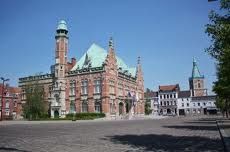 Stage 3 on Tuesday started in Orchies, a commune in northern France. It is the world capital of chicory and especially known for its Musée de la chicorée, the museum of chicory.
Stage 3 on Tuesday started in Orchies, a commune in northern France. It is the world capital of chicory and especially known for its Musée de la chicorée, the museum of chicory.
• Stage town on one previous occasion
• 8,500 inhabitants
• Head of the canton of Nord
The riders will appear for the first time in France in Orchies, which submitted a joint candidacy with Tournai as a Euroregion, a unique happening on the Tour. But Orchies is also one of the rare towns that is a stage that does not have a winner! In 1982, only three teams had set off when the team time-trial was interrupted in Denain by strike action, as a protest against the closure of the Usinor Group. On the other hand, last year, the town may have witnessed the birth of a future great champion, with the victory of Germany’s Marcel Kittel in the 1st stage of the Four Days of Dunkirk.
Many of the streets are cobblestone but Le Tour will be avoiding them. The riders will travel 197 km over a moderately hilly route with an up hill finish in Boulogne-sur-Mer:
Although the two last stages of the Tour which ended in Boulogne-sur-Mer were sprint finishes, with the victories of the Dutch Jean-Paul Van Poppel in 1994, and of the German Erik Zabel in 2001, the profile of the third stage is ideal for initiatives like those which allowed Pierrick Fédrigo and Sylvain Chavanel to obtain the French Champion’s jersey. In 2005, the air of the town greatly inspired Fédrigo, who also won the Four Days of Dunkirk’s pink leader jersey a few weeks earlier.
Originally named Gesoriacum and probably also to be identified with Portus Itius, by the 4th century Boulogne was known to the Romans as Bononia and served as the major port connecting the rest of the empire to Britain. The emperor Claudius used this town as his base for the Roman invasion of Britain, in AD 43, and until 296 it was the base of the Classis Britannica.[citation needed] Zosimus called the city “germanorum”, Germanic speaking, at the end of the 4th century. The city was an important town of the Morini.
In the Middle Ages it was the centre of a namesake county. The area was fought over by the French and the English and Boulogne was occupied by the English from 1544 to 1550. In 1550, The Peace of Boulogne ended the war of England with Scotland and France. France bought back Boulogne for 400,000 crowns.
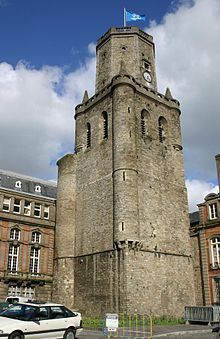 In the 19th century the Cathedral of Notre-Dame was reconstructed by the priest Benoit Haffreingue after he received a call from God to reconstruct the town’s ruined basilica. During the Napoleonic Wars, Napoleon amassed La Grande Armée in Boulogne to invade the United Kingdom in 1805. However, his plans were halted by other European matters and the supremacy of the Royal Navy (including thousands of Congreve rockets)
In the 19th century the Cathedral of Notre-Dame was reconstructed by the priest Benoit Haffreingue after he received a call from God to reconstruct the town’s ruined basilica. During the Napoleonic Wars, Napoleon amassed La Grande Armée in Boulogne to invade the United Kingdom in 1805. However, his plans were halted by other European matters and the supremacy of the Royal Navy (including thousands of Congreve rockets)
On 22 May 1940 during the Battle of France, two British Guards battalions and some pioneers attempted to defend Bolougne against an attack by the German 2nd Panzer Division. Despite fierce fighting, the British were overwhelmed and the survivors were evacuated by Royal Navy destroyers while under direct German gunfire.[4] On June 15, 1944, 297 planes (155 Avro Lancasters, 130 Handley Page Halifaxes, and 12 De Havilland Mosquitos) of the Royal Air Force bombed Boulogne harbour to suppress German naval activity following D-Day. Some of the Lancasters carried Tallboy bombs, and as a result, the harbour and the surrounding area were completely destroyed. In August, 1944 the town was declared a “fortress” by Adolf Hitler, but it succumbed to assault and liberation by the 3rd Canadian Division in September. In one incident, a French civilian guided the Canadians to a “secret passage” leading into the walled old town and by-passing the German defenders.
To replace the destroyed urban infrastructure, affordable housing and public facility projects in functional, brutalist building styles were carried out in the 1950s and 60s. The harbour therefore sometimes proves to be a disappointment to tourists looking for a typical northern French harbour scene.
Main sights
* Belfry (11th century), part of the UNESCO Heritage Sites List.
* Medieval castle, whose foundations date to Roman times. It houses an Egyptian art collection
* Gothic church of St. Nicholas, housing several 15th century statues
* Cathedral basilica of Notre-Dame, with a dome standing at over 100 m. The crypt is one of the largest in France, and has Roman, Romanesque and Gothic elements.
* Opened in 1991, Nausicaä – The French National Sea Centre is a science centre entirely dedicated to the relationship between mankind and the sea. It houses Aquaria, exhibitions on the marine fauna, and the exploitation and management of marine resources (fisheries, aquaculture, coastal planning, maritime transport, exploitation of energies and mineral, tourism).
* The Boulogne Eastern Cemetery, created during the Great War
There is a very unique exhibit in front of the Boulogne-sur-mer’s city hall, “The Car Versus Nature”
The result is more garden than graveyard for such auto parts as rearview mirrors, tires, steering wheels and entire bench seats planted among the shrubbery. The group says it’s intended to show that “against the creations of Man, Nature always wins in the end.” Nature is definitely making herself known in the plants growing through the tops of such vehicles as a Citroën 2CV. Walkways are lined with tire treads, leather car seats invite passers-by to stop and have a seat, and gearboxes sit at the main entrances to the display area. In all, six cars, two bicycles, one motorbike and a tractor are “planted” in the installation, along with an uncounted number of vehicle components and accessories.”

Click on image to enlarge for the article, a slide show and a video.
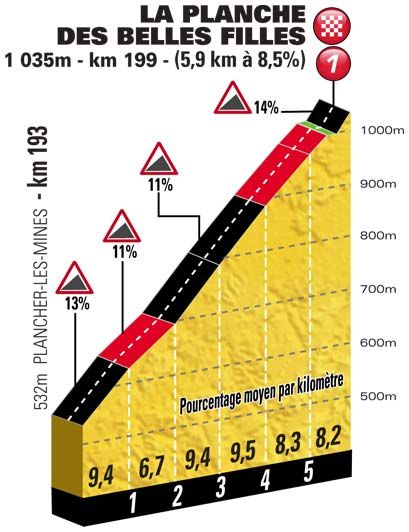
 A new town on the Tour de France’s map, Tomblaine is situated in the sphere of influence of Nancy, where the peloton has been going since 1905. Fausto Coppi, Louison Bobet and Bernard Hinaul have been winners there, but the memory which is the freshest in our minds is that of Christophe Mengin’s bitter disappointment in the 2005 Tour. The stage’s regional rider had every opportunity to win, by joining the breakaway of the day, and then leaving his fellow riders behind him in the final stretch. The several second’s lead that he still had after the red pennant should have been enough, but he was caught out by the rain and the rider from Lorraine finished his route by crashing into the barriers on the edge of the last bend. Italy’s Lorenzo Bernucci took advantage of his bad luck.
A new town on the Tour de France’s map, Tomblaine is situated in the sphere of influence of Nancy, where the peloton has been going since 1905. Fausto Coppi, Louison Bobet and Bernard Hinaul have been winners there, but the memory which is the freshest in our minds is that of Christophe Mengin’s bitter disappointment in the 2005 Tour. The stage’s regional rider had every opportunity to win, by joining the breakaway of the day, and then leaving his fellow riders behind him in the final stretch. The several second’s lead that he still had after the red pennant should have been enough, but he was caught out by the rain and the rider from Lorraine finished his route by crashing into the barriers on the edge of the last bend. Italy’s Lorenzo Bernucci took advantage of his bad luck. The only ski resort in the department of Haute-Saône and the last summit of the Vosges, La Planche des Belles Filles (English: Board of the pretty girls) is going to make a promising entrance among the Tour de France’s finish sites. Although the final slope seems to be reserved for the strongest climbers, this place takes its name from a collective and hopeless flight of the women of the valley, who wanted to escape from a massacre declared by the Vikings during their conquest in the 15 th century. The station’s name, according to legend, dates to 1635 when a Swedish soldier engraved an epitaph to some local girls who drowned whilst fleeing him and his men.
The only ski resort in the department of Haute-Saône and the last summit of the Vosges, La Planche des Belles Filles (English: Board of the pretty girls) is going to make a promising entrance among the Tour de France’s finish sites. Although the final slope seems to be reserved for the strongest climbers, this place takes its name from a collective and hopeless flight of the women of the valley, who wanted to escape from a massacre declared by the Vikings during their conquest in the 15 th century. The station’s name, according to legend, dates to 1635 when a Swedish soldier engraved an epitaph to some local girls who drowned whilst fleeing him and his men.
 The most famous street in Épernay is the
The most famous street in Épernay is the 

 Abbeville first appears in history during the ninth century. At that time belonging to the abbey of Saint-Riquier, it was afterwards governed by the Counts of Ponthieu. Together with that county, it came into the possession of the Alençon and other French families, and afterwards into that of the House of Castile, from whom by marriage it fell in 1272 to King Edward I of England. French and English were its masters by turns till 1435 when, by the treaty of Arras, it was ceded to the Duke of Burgundy. In 1477 it was annexed by King Louis XI of France, and was held by two illegitimate branches of the royal family in the 16th and 17th centuries, being in 1696 reunited to the crown. In 1514, the town saw the marriage of Louis XII of France to Mary Tudor, the daughter of Henry VII of England.
Abbeville first appears in history during the ninth century. At that time belonging to the abbey of Saint-Riquier, it was afterwards governed by the Counts of Ponthieu. Together with that county, it came into the possession of the Alençon and other French families, and afterwards into that of the House of Castile, from whom by marriage it fell in 1272 to King Edward I of England. French and English were its masters by turns till 1435 when, by the treaty of Arras, it was ceded to the Duke of Burgundy. In 1477 it was annexed by King Louis XI of France, and was held by two illegitimate branches of the royal family in the 16th and 17th centuries, being in 1696 reunited to the crown. In 1514, the town saw the marriage of Louis XII of France to Mary Tudor, the daughter of Henry VII of England.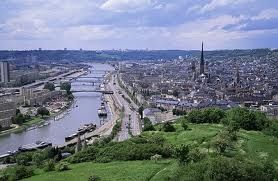 Then it is on the the finish in the historic capital city of Normandy,
Then it is on the the finish in the historic capital city of Normandy,  Rouen is known for its Notre Dame cathedral, with its Tour de Beurre (butter tower). The cathedral was the subject of a series of paintings by Claude Monet, some of which are exhibited in the Musée d’Orsay in Paris. It contains a tomb of Richard the Lionheart which contained his heart. His bowels were probably buried within the church of the Chateau of Châlus-Chabrol in the Limousin. It was from the walls of the Chateau of Châlus-Chabrol that the crossbow bolt was fired, which led to his death once the wound became septic. His corporeal remains were buried next to his father at Fontevraud Abbey near Chinon and Saumur, France. Richard’s effigy is on top of the tomb, and his name is inscribed in Latin on the side.
Rouen is known for its Notre Dame cathedral, with its Tour de Beurre (butter tower). The cathedral was the subject of a series of paintings by Claude Monet, some of which are exhibited in the Musée d’Orsay in Paris. It contains a tomb of Richard the Lionheart which contained his heart. His bowels were probably buried within the church of the Chateau of Châlus-Chabrol in the Limousin. It was from the walls of the Chateau of Châlus-Chabrol that the crossbow bolt was fired, which led to his death once the wound became septic. His corporeal remains were buried next to his father at Fontevraud Abbey near Chinon and Saumur, France. Richard’s effigy is on top of the tomb, and his name is inscribed in Latin on the side. Stage 3 on Tuesday started in
Stage 3 on Tuesday started in  In the 19th century the Cathedral of Notre-Dame was reconstructed by the priest Benoit Haffreingue after he received a call from God to reconstruct the town’s ruined basilica. During the Napoleonic Wars, Napoleon amassed La Grande Armée in Boulogne to invade the United Kingdom in 1805. However, his plans were halted by other European matters and the supremacy of the Royal Navy (including thousands of Congreve rockets)
In the 19th century the Cathedral of Notre-Dame was reconstructed by the priest Benoit Haffreingue after he received a call from God to reconstruct the town’s ruined basilica. During the Napoleonic Wars, Napoleon amassed La Grande Armée in Boulogne to invade the United Kingdom in 1805. However, his plans were halted by other European matters and the supremacy of the Royal Navy (including thousands of Congreve rockets)

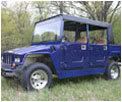 In the firefly-dreaming edition of last week’s
In the firefly-dreaming edition of last week’s 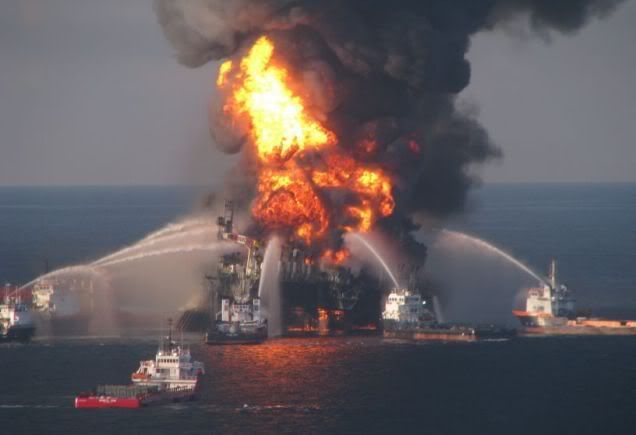 OK, the story so far:
OK, the story so far:  Transport needs about 7 5% solutions per decade over the next two decades. With the White House policy as one, Steel Interstates, Nationwide Oil-Free Liberty Transport networks, 5% of trips by Active Transport, and doubling the fuel efficiency of cars carrying 10% of passengers, that’s 5 of the 7.
Transport needs about 7 5% solutions per decade over the next two decades. With the White House policy as one, Steel Interstates, Nationwide Oil-Free Liberty Transport networks, 5% of trips by Active Transport, and doubling the fuel efficiency of cars carrying 10% of passengers, that’s 5 of the 7.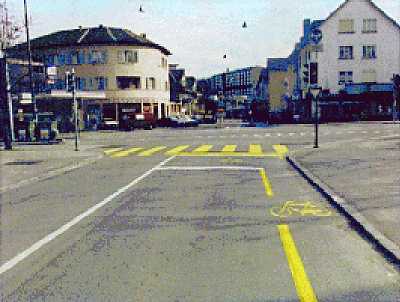 In the store, or at the airport, a “bike box” is a box that is supposed to have a bike inside of it.
In the store, or at the airport, a “bike box” is a box that is supposed to have a bike inside of it.